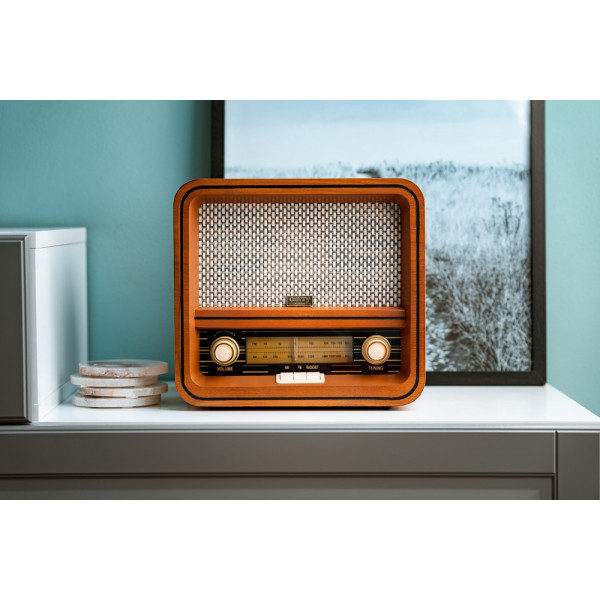A History of Radio
In 1897, Guglielmo Marconi sent a Morse code signal across the Bristol Channel, a 12-mile leap that ignited humanity’s first wireless conversation. Today, 127 years later, radio thrives as podcasts, streaming playlists, and satellite broadcasts. How did a technology once deemed a “flash in the pan” outlive telegrams, outsmart television, and outpace extinction? This is the story of radio—not just as a device, but as a cultural heartbeat.
Chapter 1: Sparks in the Dark (1890s–1920s)
The Inventors’ Feud
Radio’s birth was a clash of titans. Nikola Tesla envisioned a world connected by wireless energy; Marconi, his pragmatic rival, patented the first practical radio transmitter in 1896. The U.S. Supreme Court later awarded Tesla posthumous patents in 1943—proving genius often outlives credit.
First Voices in the Void
On Christmas Eve 1906, Reginald Fessenden broadcast violin music and Bible readings to ships at sea. Sailors swore they’d heard angels. By 1920, KDKA Pittsburgh became the first licensed station, airing election results that hooked 1,000 listeners.
Key Moment: The 1912 Titanic disaster proved radio’s lifesaving power—its SOS signals saved 700 souls, cementing wireless as necessity, not novelty.
Chapter 2: The Golden Age (1930s–1950s)
The Theater of the Mind
Families huddled around wooden consoles as Orson Welles’ War of the Worlds (1938) convinced thousands that Martians invaded New Jersey. Radio dramas, from The Shadow to Superman, turned imagination into a national pastime.
War Waves
During WWII, Edward R. Murrow’s crackling broadcasts from London (“This… is London”) brought Blitz bombings into American living rooms. Rosie the Riveter swung to swing music on factory radios, while Tokyo Rose’s propaganda tested loyalties.
By the Numbers:
- 1945: 95% of U.S. homes owned a radio.
- 1950: 80% of TV’s early shows were radio hand-me-downs (The Lone Ranger, Dragnet).
Chapter 3: FM’s Rebellion (1960s–1980s)
Armstrong’s Gift and Tragedy
Edwin Armstrong, FM radio’s inventor, fought RCA’s AM monopoly only to be driven to suicide in 1954. Yet by the 1970s, FM’s crisp sound became the rebel yell of rock ’n’ roll. Stations like WNEW-FM (New York) ditched playlists for DJs who spun Led Zeppelin at midnight.
Pirate Radio and Counterculture
Offshore pirates like Radio Caroline (UK) blasted The Beatles to millions, dodging government raids. In the U.S., underground FM stations fueled anti-Vietnam protests, proving radio could be a weapon of dissent.
Iconic Moment: 1967’s “Summer of Love” was soundtracked by FM’s psychedelic rock, while AM clung to Bing Crosby.
Chapter 4: Survival Mode (1990s–2010s)
Talk Radio’s Roar
As MTV stole music fans, radio fought back with voices. Rush Limbaugh’s conservative tirades drew 15M weekly listeners by 1995. NPR’s All Things Considered turned news into narrative, birthing the “podcast” avant la lettre.
The Corporate Chop
The 1996 Telecommunications Act let conglomerates like Clear Channel (now iHeartMedia) swallow 1,200+ stations. Playlists narrowed, local DJs vanished, and “cookie-cutter radio” sparked a backlash.
Irony Alert: Clear Channel’s homogenization birthed indie internet radio—a rebellion it couldn’t control.
Chapter 5: The Digital Resurrection (2010s–Present)
Podcasts: Radio’s Revenge
Serial’s 2014 debut proved radio’s intimacy couldn’t be screen-killed. Today, 464.7 million global listeners tune into podcasts—many produced by ex-radio rebels.
Algorithms vs. DJs
Spotify’s Discover Weekly curates playlists, but stations like WXPN (Philadelphia) keep human DJs to “break” artists like Adele. Meanwhile, smart speakers like Alexa made radio a voice-activated companion.
Future Shock: AI-driven stations like “AI.FM” now compose synthwave beats in real time—Marconi’s ghost with a neural network.
FAQ: Radio’s Unanswered Questions
1. Why did AM radio survive?
Traffic updates, sports, and conservative talk. AM’s long-range signal still rules rural areas.
2. What killed the radio star?
MTV, then the internet. But viral TikTok songs now rely on radio for legitimacy.
3. Can local radio survive?
Stations like WFMU (freeform) thrive on listener donations. Community radio is now a lifestyle brand.
4. Who owns the airwaves?
In the U.S., the FCC licenses frequencies, but corporations like iHeartMedia dominate.
5. Is radio still relevant?
Yes—89% of Americans 12+ listen weekly (Nielsen, 2023). Your car’s Bluetooth still starts with FM.
Epilogue: The Eternal Frequency
Radio’s secret isn’t technology—it’s intimacy. A DJ’s whisper at 2 AM, a storm warning slicing static, a teen discovering Bowie on a basement transistor. As long as humans crave connection, radio will morph, but never die.
Final Thought: In a world of screens, radio remains the background music to life itself—unseen, essential, alive.
Keywords: history of radio, invention of radio, Golden Age of radio, FM radio revolution, future of radio

